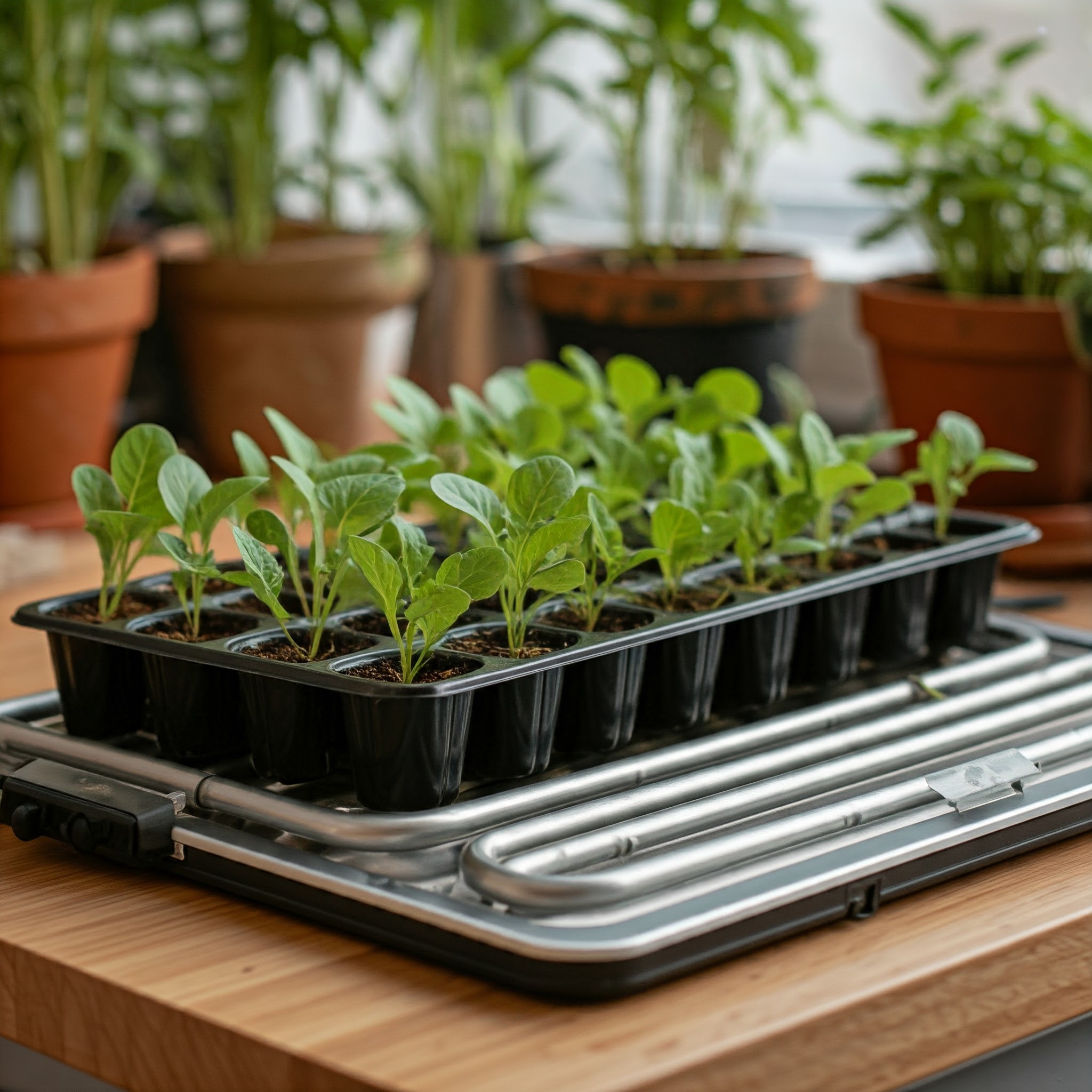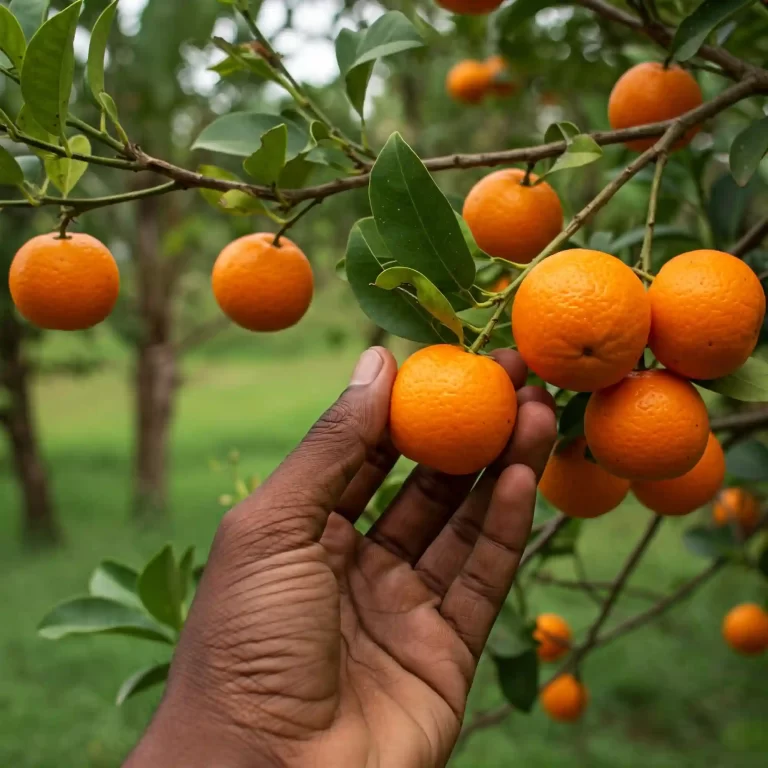Starting seeds indoors can be a challenging task for many gardeners. You might have experienced the frustration of seeds that refuse to sprout or seedlings that grow weak and spindly. This problem often stems from inadequate soil temperature, which is crucial for seed germination. Seed starting heat mats offer a simple solution to this problem by providing consistent warmth to your seeds, ensuring they germinate quickly and grow into healthy seedlings. In this comprehensive guide, we will explore everything you need to know about seed starting heat mats, from their benefits and setup to best practices and common mistakes to avoid. Whether you’re a novice gardener or an experienced green thumb, this guide will help you make the most of your seed starting efforts.
What Are Seed Starting Heat Mats?
Seed starting heat mats are specialized heating devices designed to provide consistent warmth to the soil in which seeds are planted. These mats are typically made of durable, waterproof materials and contain heating elements that distribute heat evenly across the surface. By maintaining an optimal soil temperature, seed starting heat mats create an ideal environment for seed germination, which can significantly improve the success rate of your gardening efforts.
Types of Seed Starting Heat Mats
There are several types of seed starting heat mats available on the market, each with its own set of features and benefits. Here are some common types:
- Standard Heat Mats: These are basic mats that provide consistent heat without any additional features. They are suitable for most seed starting needs and are often the most affordable option.
- Thermostat-Controlled Heat Mats: These mats come with a built-in thermostat that allows you to set and maintain a specific temperature. This feature is particularly useful for seeds that require precise temperature control for optimal germination.
- Waterproof Heat Mats: Designed for use in humid environments or with hydroponic systems, these mats are fully waterproof and can withstand exposure to moisture without damage.
- Heavy-Duty Heat Mats: Made from more robust materials, these mats are designed for commercial use or for gardeners who need a more durable option for frequent use.
Key Components of Seed Starting Heat Mats
Understanding the key components of seed starting heat mats can help you choose the right one for your needs. Here are some important features to consider:
- Heating Element: The core component that generates heat. Look for mats with evenly distributed heating elements to ensure consistent soil temperature.
- Thermostat Controller: Allows you to set and monitor the temperature. Some mats come with an integrated thermostat, while others require an external controller.
- Waterproof Surface: Essential for preventing damage from water spills or high humidity levels. Ensure the mat is rated as waterproof if you plan to use it in such conditions.
- Power Cord: The length and quality of the power cord can affect the convenience and safety of using the mat. Look for mats with long, durable cords that can reach your power source easily.
Applications of Seed Starting Heat Mats
Seed starting heat mats are versatile tools that can be used in various gardening applications. Here are some common uses:
- Indoor Gardening: Ideal for starting seeds indoors during the colder months or in climates with short growing seasons.
- Greenhouse Gardening: Helps maintain optimal soil temperature in greenhouses, promoting faster and more uniform seed germination.
- Hydroponics: Provides consistent warmth to hydroponic systems, ensuring healthy root development and plant growth.
- Propagation of Cuttings: Can be used to provide warmth to cuttings, encouraging root formation and growth.
Benefits of Using Seed Starting Heat Mats
Using seed starting heat mats offers several benefits that can enhance your gardening experience and improve the success rate of your seed starting efforts. Here are some key advantages:
- Faster Germination: By maintaining a consistent and optimal soil temperature, heat mats can significantly speed up the germination process, allowing you to see results sooner.
- Improved Seedling Health: Consistent warmth promotes strong root development and healthy seedling growth, reducing the risk of weak or spindly plants.
- Extended Growing Season: Heat mats enable you to start seeds indoors earlier in the season, giving your plants a head start and extending the overall growing season.
- Versatility: Suitable for a wide range of plants and gardening applications, from vegetables and herbs to flowers and ornamental plants.
- Ease of Use: Simple to set up and use, even for novice gardeners. Most heat mats come with clear instructions and require minimal maintenance.
Case Study: Successful Seed Germination with Heat Mats
To illustrate the effectiveness of seed starting heat mats, let’s look at a case study of a gardener who used heat mats to improve their seed germination success. Jane, an avid gardener from New York, struggled with poor germination rates for her tomato and pepper seeds. After researching various solutions, she decided to invest in a thermostat-controlled seed starting heat mat. By setting the mat to the optimal temperature for her seeds, she noticed a significant improvement in germination rates, with nearly all of her seeds sprouting within a week. The seedlings grew strong and healthy, and Jane was able to transplant them into her garden earlier than usual, resulting in a bountiful harvest.Jane’s experience highlights the practical benefits of using seed starting heat mats and demonstrates how they can transform your gardening results.
How Do Seed Starting Heat Mats Work?
Seed starting heat mats operate on a simple principle: they provide consistent, gentle heat to the soil, which is crucial for seed germination. Here’s a detailed look at how these mats work and why they are effective.
Heating Mechanism
The core component of a seed starting heat mat is its heating element. This element is typically made of a flexible, durable material that can evenly distribute heat across the mat’s surface. When plugged in, the heating element warms up, transferring heat to the soil in the seed trays placed on top of the mat. This consistent warmth mimics the natural conditions that seeds need to germinate, especially for those that require higher temperatures.
Optimal Temperature Range
Different seeds have varying temperature requirements for optimal germination. Most seed starting heat mats are designed to maintain a temperature range of 70-85°F (21-29°C), which is suitable for a wide variety of seeds. Some mats come with adjustable thermostats, allowing you to set the precise temperature needed for specific seeds. For example, tomatoes and peppers thrive at the higher end of this range, while lettuce and other cool-weather crops prefer slightly lower temperatures.
Benefits of Consistent Heat
Consistent soil temperature is critical for several reasons:
- Enhanced Germination Rates: Seeds germinate more quickly and uniformly when kept at a stable, warm temperature.
- Stronger Seedlings: Consistent warmth promotes robust root development and healthier seedlings.
- Reduced Risk of Disease: Warm soil can help prevent damping-off, a common fungal disease that affects seedlings.
Case Study: Temperature Control and Seed Germination
Consider the case of a commercial greenhouse that implemented seed starting heat mats with thermostat controls. By maintaining precise temperature settings for different crops, the greenhouse saw a 30% increase in germination rates and a significant reduction in seedling mortality. This improvement not only boosted their productivity but also enhanced the quality of the plants they produced.
Benefits of Using Seed Starting Heat Mats
Using seed starting heat mats offers numerous advantages that can significantly improve your gardening success. Here are some of the key benefits:
Faster Germination
One of the primary benefits of using seed starting heat mats is faster germination. Seeds require warmth to break dormancy and begin the germination process. By providing consistent heat, these mats can speed up this process, allowing you to see sprouts in a shorter time frame. For instance, tomato seeds that might take 10-14 days to germinate at room temperature can sprout in as little as 5-7 days with the help of a heat mat.
Improved Seedling Health
Healthy seedlings are the foundation of a successful garden. Seed starting heat mats promote strong root development and vigorous growth by maintaining an optimal soil temperature. This consistent warmth helps seedlings develop sturdy stems and leaves, making them more resilient when transplanted outdoors.
Extended Growing Season
Heat mats enable you to start seeds indoors earlier in the season, giving your plants a head start. This extended growing season can be particularly beneficial in regions with short growing periods. By starting seeds indoors with the help of heat mats, you can transplant mature seedlings into your garden as soon as the weather permits, maximizing your harvest potential.
Versatility
Seed starting heat mats are versatile tools that can be used for a variety of gardening applications. Whether you’re starting vegetable seeds, propagating cuttings, or growing herbs indoors, heat mats provide the consistent warmth needed for successful germination and growth. They are also useful for hydroponic systems, where maintaining a stable root zone temperature is crucial.
Ease of Use
Even novice gardeners can benefit from using seed starting heat mats. These mats are easy to set up and use, with most models requiring only a simple plug-in to start providing heat. Many heat mats come with clear instructions and require minimal maintenance, making them an accessible tool for gardeners of all skill levels.
Case Study: Extending the Growing Season
A gardener in Minnesota, where the growing season is relatively short, used seed starting heat mats to start her vegetable seeds indoors in late winter. By the time the last frost date arrived, she had robust seedlings ready for transplanting. This head start allowed her to enjoy a longer harvest period, with fresh vegetables available well into the fall.
How to Choose the Right Seed Starting Heat Mat
Selecting the right seed starting heat mat is crucial for achieving the best results. Here are some factors to consider when choosing a heat mat:
Size
The size of the heat mat should match the size of your seed trays or growing area. Heat mats come in various sizes, from small mats suitable for a single tray to larger mats that can accommodate multiple trays. Measure your growing space and choose a mat that fits comfortably.
Temperature Control
Temperature control is an important feature to consider. Some heat mats come with built-in thermostats that allow you to set and maintain a specific temperature. Others may require an external thermostat controller. Look for mats with adjustable temperature settings if you plan to grow a variety of seeds with different temperature requirements.
Waterproofing
Waterproof heat mats are essential if you plan to use them in humid environments or with hydroponic systems. These mats are designed to withstand exposure to moisture without damage, ensuring long-lasting performance.
Durability
Durability is another key factor to consider. Heavy-duty heat mats are made from robust materials that can withstand frequent use and rough handling. If you plan to use your heat mat regularly or in a commercial setting, investing in a durable model is a wise choice.
Brand and Model Comparison
Here is a comparison of some popular seed starting heat mats:
| Brand | Model | Size | Temperature Control | Waterproof | Price Range |
| VIVOSUN | Seedling Heat Mat | 10″ x 20.75″ | Yes | Yes | $20-$30 |
| Hydrofarm | Jump Start | 9″ x 19.5″ | No | Yes | $15-$25 |
| iPower | Seedling Heat Mat | 10″ x 20.5″ | Yes | Yes | $20-$30 |
| Seedfactor | Seedling Heat Mat | 10″ x 20.75″ | Yes | Yes | $20-$30 |
Case Study: Choosing the Right Heat Mat
A small-scale organic farmer in California needed a reliable heat mat for starting a variety of vegetable seeds. After comparing different models, she chose the VIVOSUN Seedling Heat Mat with a built-in thermostat. The adjustable temperature settings allowed her to customize the heat for different seeds, resulting in higher germination rates and healthier seedlings. The waterproof design also provided peace of mind, knowing that the mat could withstand the humid conditions of her greenhouse.
Setting Up Your Seed Starting Heat Mat
Proper setup is essential for getting the most out of your seed starting heat mat. Follow these steps to ensure optimal performance:
Step-by-Step Guide
- Choose a Location: Select a flat, stable surface near a power outlet. Ensure the area is free from drafts and temperature fluctuations.
- Place the Heat Mat: Lay the heat mat flat on the chosen surface. If using multiple mats, ensure they are spaced evenly and not overlapping.
- Position the Seed Trays: Place your seed trays or pots on top of the heat mat. Ensure the trays are in direct contact with the mat for even heat distribution.
- Set the Temperature: If your heat mat has a built-in thermostat, set the desired temperature according to the seed packet instructions. For mats without a thermostat, use an external controller to monitor and adjust the temperature.
- Monitor Soil Moisture: Keep the soil consistently moist but not waterlogged. Use a spray bottle to mist the soil surface as needed.
- Check Temperature Regularly: Use a soil thermometer to check the temperature periodically. Adjust the settings if necessary to maintain the optimal range.
Safety Precautions
- Avoid Overheating: Do not set the temperature too high, as this can damage the seeds and seedlings.
- Use a Thermostat: Always use a thermostat to regulate the temperature and prevent overheating.
- Keep Dry: Ensure the heat mat and power cord remain dry to avoid electrical hazards.
- Unplug When Not in Use: Unplug the heat mat when not in use to conserve energy and prevent potential overheating.
Case Study: Successful Setup and Use
A community garden in Oregon implemented seed starting heat mats to improve their seedling production. By following the setup steps and safety precautions, they achieved a 95% germination rate for their vegetable seeds. The consistent warmth provided by the heat mats resulted in strong, healthy seedlings that were ready for transplanting into the garden beds.
Best Practices for Using Seed Starting Heat Mats
To maximize the benefits of your seed starting heat mat, follow these best practices:
Ideal Temperature Settings
Different seeds have specific temperature requirements for optimal germination. Here are some general guidelines:
- Tomatoes and Peppers: 75-85°F (24-29°C)
- Lettuce and Spinach: 65-75°F (18-24°C)
- Herbs (Basil, Parsley): 70-75°F (21-24°C)
- Flowers (Marigolds, Petunias): 70-80°F (21-27°C)
Monitoring Soil Moisture
Maintaining the right soil moisture level is crucial for seed germination. Here are some tips:
- Consistent Moisture: Keep the soil consistently moist but not waterlogged. Use a spray bottle to mist the soil surface regularly.
- Drainage: Ensure your seed trays have proper drainage to prevent waterlogging, which can lead to root rot and other issues.
- Humidity Domes: Use humidity domes to maintain a high humidity level around the seeds, which can help with germination. Remove the domes once the seedlings emerge to prevent fungal diseases.
Duration of Heat Mat Use
The duration for which you should use the heat mat depends on the type of seeds and their germination time. Here are some general guidelines:
- Until Germination: Use the heat mat until the seeds have germinated and the seedlings have emerged. This can range from a few days to a couple of weeks, depending on the seed type.
- After Germination: Once the seedlings have emerged, you can remove the heat mat or reduce the temperature to avoid overheating the young plants.
Case Study: Monitoring and Adjusting Conditions
A hobby gardener in Texas used seed starting heat mats to start her vegetable garden. By carefully monitoring soil moisture and temperature, she achieved a high germination rate and healthy seedlings. She used a soil thermometer to check the temperature daily and adjusted the settings as needed. Her attention to detail paid off, resulting in a successful and productive garden.
Common Mistakes to Avoid
While seed starting heat mats are relatively easy to use, there are some common mistakes that gardeners should avoid to ensure the best results.
Overheating Seeds
One of the most common mistakes is setting the temperature too high. Overheating can damage the seeds and inhibit germination. Always follow the recommended temperature range for the specific seeds you are starting.
Not Using a Thermostat
Using a heat mat without a thermostat can lead to inconsistent temperatures and potential overheating. A thermostat allows you to set and maintain the optimal temperature, ensuring consistent warmth for your seeds.
Ignoring Soil Moisture Levels
Maintaining the right soil moisture level is crucial for seed germination. Overwatering or underwatering can both be detrimental. Use a spray bottle to mist the soil surface regularly and ensure proper drainage in your seed trays.
Leaving the Heat Mat On for Too Long
Leaving the heat mat on for too long after the seedlings have emerged can lead to overheating and stress for the young plants. Once the seedlings have germinated, consider reducing the temperature or removing the heat mat altogether.
Case Study: Avoiding Common Mistakes
A community garden in Florida experienced poor germination rates due to overheating their seeds. After consulting with an experienced gardener, they invested in thermostats for their heat mats and adjusted the temperature settings. By monitoring soil moisture and using humidity domes, they significantly improved their germination success and produced healthy seedlings.
Top Seed Starting Heat Mats on the Market
Choosing the right seed starting heat mat can make a significant difference in your gardening success. Here are some of the top-rated heat mats available:
VIVOSUN Seedling Heat Mat
- Size: 10″ x 20.75″
- Temperature Control: Yes, with built-in thermostat
- Waterproof: Yes
- Price Range: $20-$30
- Pros: Durable, even heat distribution, easy to use
- Cons: Slightly higher price compared to basic models
Hydrofarm Jump Start Heat Mat
- Size: 9″ x 19.5″
- Temperature Control: No, requires external thermostat
- Waterproof: Yes
- Price Range: $15-$25
- Pros: Affordable, reliable performance
- Cons: No built-in temperature control
iPower Seedling Heat Mat
- Size: 10″ x 20.5″
- Temperature Control: Yes, with built-in thermostat
- Waterproof: Yes
- Price Range: $20-$30
- Pros: Adjustable temperature, durable design
- Cons: May be too large for small setups
Seedfactor Seedling Heat Mat
- Size: 10″ x 20.75″
- Temperature Control: Yes, with built-in thermostat
- Waterproof: Yes
- Price Range: $20-$30
- Pros: Consistent heat, easy to clean
- Cons: Limited size options
FAQs About Seed Starting Heat Mats
How to Use Seed Starting Heat Mats?
To use seed starting heat mats effectively, follow these steps:
- Place the heat mat on a flat, stable surface near a power outlet.
- Position your seed trays or pots on top of the mat.
- Set the desired temperature using the built-in thermostat or an external controller.
- Monitor soil moisture and temperature regularly.
- Remove the heat mat or reduce the temperature once the seedlings have emerged.
What Are the Best Seed Starting Heat Mats for Beginners?
For beginners, it’s best to choose a heat mat with built-in temperature control and a waterproof design. The VIVOSUN Seedling Heat Mat and iPower Seedling Heat Mat are both excellent options for novice gardeners.
Can You Leave Seed Starting Heat Mats On All the Time?
While it’s generally safe to leave seed starting heat mats on continuously during the germination period, it’s important to monitor the temperature and soil moisture regularly. Once the seedlings have emerged, consider reducing the temperature or turning off the mat to prevent overheating.
Do Seed Starting Heat Mats Really Work?
Yes, seed starting heat mats are highly effective for improving germination rates and promoting healthy seedling growth. By providing consistent warmth, they create an optimal environment for seeds to sprout and develop into strong plants.
How to Clean and Maintain Seed Starting Heat Mats?
To clean and maintain your seed starting heat mat:
- Unplug the mat and allow it to cool completely.
- Wipe the surface with a damp cloth and mild soap.
- Avoid submerging the mat in water or using harsh chemicals.
- Store the mat in a cool, dry place when not in use.
Conclusion and Final Tips
In conclusion, seed starting heat mats are invaluable tools for gardeners looking to improve their seed germination success. By providing consistent warmth, these mats create an ideal environment for seeds to sprout and grow into healthy seedlings. Remember to choose the right heat mat for your needs, set it up properly, and follow best practices to maximize your results. With the right approach, you can enjoy a bountiful garden filled with strong, vibrant plants.
Final Tips
- Experiment with Different Seeds: Try using heat mats with a variety of seeds to see which ones benefit the most from the added warmth.
- Share Your Results: Join gardening forums or social media groups to share your experiences and learn from other gardeners.
- Stay Informed: Keep up with the latest gardening trends and techniques to continually improve your seed starting efforts.
By following these tips and using seed starting heat mats effectively, you’ll be well on your way to a successful and productive gardening season. Happy gardening!








